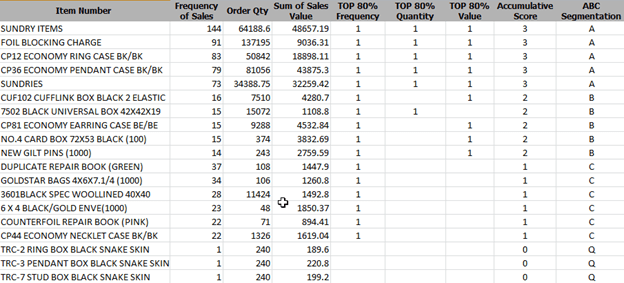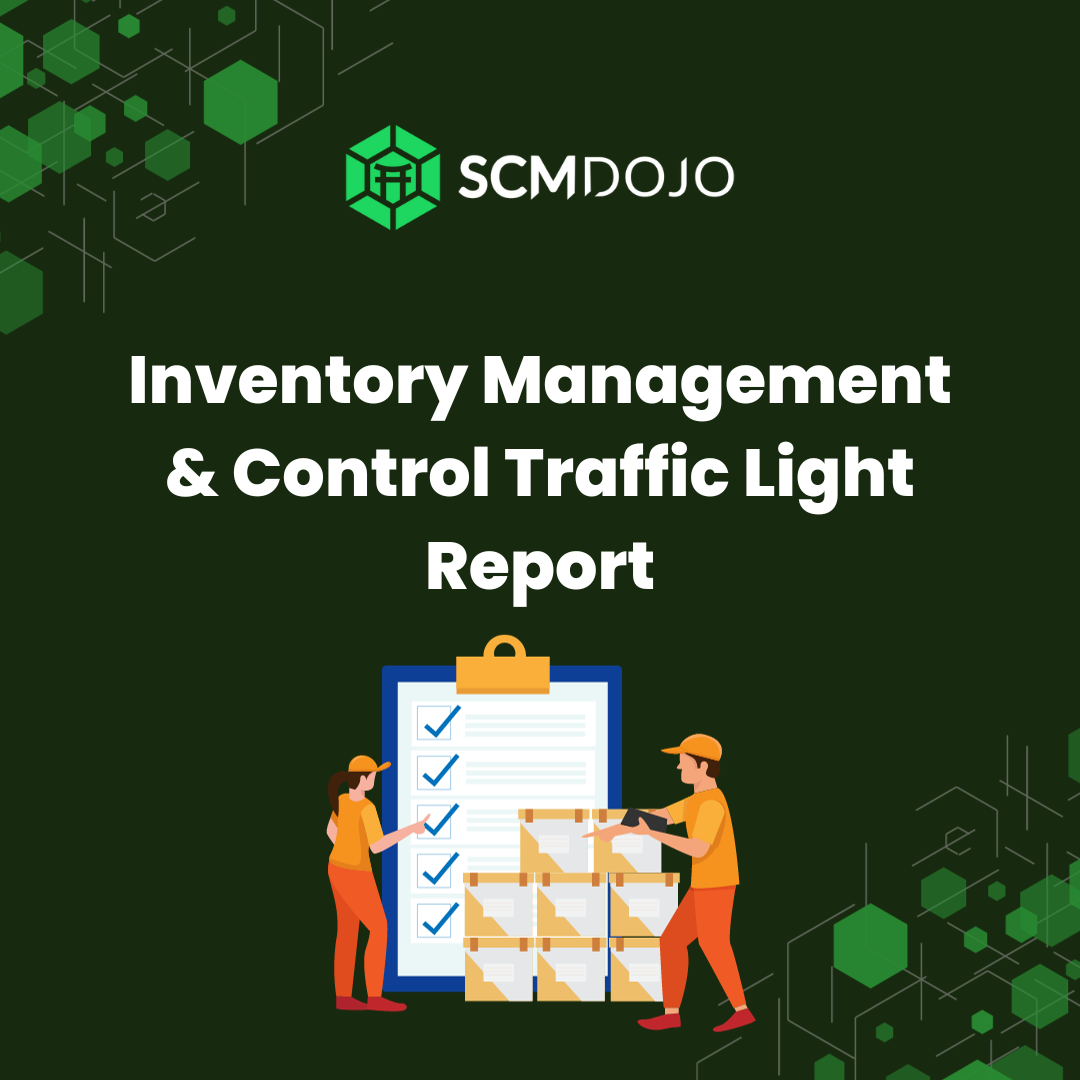In the dynamic landscape of supply chain and inventory control, understanding the value and significance of each item in your stockpile is paramount. ABC classification offers a structured approach to categorize products based on their importance. In this blog, we’ll delve into the core concepts of ABC classification, provide step-by-step instructions on how to implement it, and shed light on its manifold benefits. Whether you’re a seasoned inventory manager seeking optimization strategies or a budding entrepreneur looking to streamline your stock, this guide will equip you with the knowledge and tools to make informed decisions. Let’s embark on this journey towards efficient inventory management, starting with a clear understanding of ABC classification.
[Read More: 6 Supply Chain Tools Which Will Save You 30 Hours]
Key Takeaways:
- Definition of ABC Classification in the context of inventory management and its expanded meaning
- Step-by-step process on how to calculate ABC Classification Analysis
- Tools you can use to do the analysis for you
- How to utilize your analysis and findings
- Benefits of ABC Analysis
- XYZ Classification and analysis in the context of inventory management
ABC Classification Definition
ABC classification is a crucial technique in inventory management that categorizes products based on their value and importance. Derived from the Pareto principle, it focuses on the vital few items that contribute significantly to revenue. This classification system divides inventory into three categories:
- Class A: These are high-value items, accounting for only 10% of quantity but contributing to 70%–80% of consumption value.
- Class B: These items have moderate importance, making up 10%–20% of revenue.
- Class C: Consisting of the least valuable items, they contribute only 10% of revenue.
This classification aids managers in prioritizing and monitoring high-value items effectively.
How to Calculate ABC Classification
To perform ABC classification, follow these five steps:
Step 1: Data Collection and Preparation
The initial step in this process is to gather your sales data from the past 12 months. This dataset should encompass crucial information such as part numbers, quantities sold, and the corresponding monetary value. This foundational data will serve as the cornerstone for your analysis, providing the necessary insights to categorize your inventory effectively.
Step 2: Ranking by Quantity Sold
With your dataset in hand, arrange the items in descending order based on quantity sold. This straightforward organization allows for a clear view of your most and least sold items. In line with the Pareto principle, distinctly mark the top 80% of items in terms of quantity. These are the high-priority items that drive a significant portion of your sales.
Step 3: Prioritizing by Value of Sales
Next, focus on the value of sales. By listing items from the highest revenue generators to the lowest, you gain a comprehensive understanding of their monetary significance. As with quantity, identify the top 80% of items by value and mark them distinctly. These are the high-value assets that substantially contribute to your revenue stream.
Step 4: Segmenting by Frequency of Sales
Adding a distinctive twist to the analysis, consider the frequency of sales for each item. Start by listing items from the highest to lowest frequency. Once again, select the top 80% and mark them distinctly. These are the items that exhibit a consistent demand, further refining your inventory classification.
Step 5: Integration and Classification
The final and pivotal step involves consolidating the insights from the three separate analyses: quantity, value, and frequency. By combining these findings into a single spreadsheet, you create a comprehensive overview of each item’s performance.
- Items falling into the top 80% for all three categories are unequivocally ‘Class A’, signifying their critical importance.
- Those appearing in two out of the three categories are designated ‘Class B’, representing a moderate level of significance.
- Items falling into only one of the three categories are classified as ‘Class C’, denoting a lower level of importance.
[Read More: Quickest Way to Perform ABC Inventory Analysis- Based on Value, Volume & Frequency of Sales]
How To Utilize Your ABC Classification Analysis
Once you’ve completed the ABC classification analysis, it’s time to evaluate your current inventory management strategies for each category. If you discover that you’ve been applying a one-size-fits-all approach, regardless of category, it’s likely that your inventory policies are both inefficient and costlier than necessary. This often leads to instances of overstocking and under-ordering across various product lines.
The silver lining is that there’s ample room for enhancement! Implementing changes can result in reduced inventory expenses, along with more streamlined delivery and management processes.
To kickstart this improvement process, tailor your procurement and inventory policies to align with each group identified through ABC classification. For Class A items, consider implementing more sophisticated ordering procedures, such as meticulously scrutinizing every purchase order and engaging in in-depth discussions about lead times with suppliers to ensure optimal value and timely deliveries. On the flip side, Class C items can be managed with significantly less time investment and may even be set up for automatic ordering to conserve valuable human resources.
Want a Tool to do the job for you?
Save valuable time and effort by utilizing SCMDOJO’s ready-made ABC Analysis tool. With this user-friendly tool at your disposal, you can bypass the time-consuming process of manually calculating ABC classifications. Whether you’re a seasoned inventory manager or a budding entrepreneur, this efficient solution streamlines the entire analysis, providing you with quick and accurate results. Say goodbye to hours spent on data compilation and pivot table creation. Instead, let SCMDOJO’s tool do the heavy lifting, allowing you to focus on strategic decision-making and optimizing your inventory management process. Try it out today and experience the ease and efficiency it brings to your supply chain operations.
Benefits of ABC Classification
ABC classification offers several benefits:
- End-of-Life Management: It helps forecast demand, allowing for better management of stock levels, particularly for products in the decline phase.
- Supplier Negotiation: Focus negotiation efforts on Class A items to maximize profitability. Negotiate not only on price but also on additional benefits like post-purchase services.
- Inventory Optimization: Organize stock levels according to priority, ensuring high-demand items are readily available while minimizing carrying costs.
- Strategic Pricing: Set prices strategically for high-value items, considering customer demand and profit margins.
- Resource Allocation: Continuously monitor Class A items to align stock levels with customer demand. Reclassify items as needed based on their importance.
- Customer Service Levels: Tailor service levels to the product classification, optimizing the supply chain performance and reducing safety stock for low-margin items.
[Read More: 6 Basic Benefits to Adapting ABC Analysis of Inventory]
XYZ Analysis
XYZ analysis complements ABC classification by categorizing items based on their demand variability. This approach helps in fine-tuning inventory management strategies.
Incorporating both ABC and XYZ analyses into your inventory management system provides a comprehensive framework for effectively managing stock, optimizing resources, and maximizing profitability.
[Read More: The ABC-XYZ Inventory Management Model – Align Planning Parameter with Business Goals]
Conclusion
In conclusion, mastering ABC analysis in inventory management is undeniably a game-changer for any business. By categorizing items based on their value, volume, and frequency of sales, you gain invaluable insights that can revolutionize your supply chain strategies. From prioritizing high-value items to optimizing resource allocation, the benefits are manifold. Additionally, with the availability of user-friendly tools like SCMDOJO’s Inventory Optimization tool, the process becomes even more accessible and time-efficient. Embrace this powerful technique and watch as it leads to reduced costs, enhanced efficiency, and ultimately, a thriving and more profitable supply chain. Take the first step towards smarter inventory management today. Happy analyzing!
Frequently Asked Questions (FAQs)
1. How do you classify ABC inventory?
ABC inventory classification involves categorizing items based on their importance and value. This classification is typically done using the Pareto Principle, which states that a small percentage of items contribute to a large percentage of the overall value.
- Class A: These are high-priority items with the highest value or importance. They constitute a smaller percentage of the total items but contribute significantly to the overall value.
- Class B: These items have moderate importance and value. They are more numerous than Class A items but contribute less to the overall value.
- Class C: These are low-priority items with the lowest value or importance. They make up the majority of items but contribute the least to the overall value.
2. What is ABC and XYZ classification?
ABC and XYZ classifications are two distinct methods used in inventory management.
ABC Classification: This method categorizes items based on their importance, with Class A being the highest priority items, Class B having moderate priority, and Class C being the lowest priority. It is primarily determined by the value, volume, and frequency of sales of each item.
XYZ Classification: XYZ classification categorizes items based on their demand variability.
- X-items are highly variable, with demand that is difficult to predict.
- Y-items have moderate variability in demand.
- Z-items have steady and predictable demand patterns.
3. What is XYZ classification?
XYZ classification is a method in inventory management that categorizes items based on their demand variability. It helps in determining how to manage and forecast inventory effectively.
- X-items: These are characterized by high demand variability, making them challenging to predict. They often require more frequent monitoring and adjustments to inventory levels.
- Y-items: These have a moderate level of demand variability, making their forecasting and management relatively less complex compared to X-items.
- Z-items: These have low demand variability and exhibit steady and predictable demand patterns, requiring less frequent adjustments to inventory levels.
4. Why is the ABC classification of inventory important?
The ABC classification of inventory is crucial for several reasons:
- Prioritization: It helps in focusing resources and attention on high-value items that contribute significantly to revenue.
- Optimized Resource Allocation: It allows for efficient allocation of resources, such as time and capital, by emphasizing high-priority items.
- Reduced Costs: It aids in identifying items that may be overstocked or underutilized, leading to cost savings in inventory management.
- Improved Supplier Negotiations: It guides negotiations with suppliers, especially for Class A items, ensuring better value and timely deliveries.
- Enhanced Decision-Making: It provides a clear framework for making strategic decisions regarding inventory, leading to improved overall supply chain performance.
–
About the Author – Dr Muddassir Ahmed
Dr MuddassirAhmed is the Founder & CEO of SCMDOJO. He is a global speaker, vlogger and supply chain industry expert with 17 years of experience in the Manufacturing Industry in the UK, Europe, the Middle East and South East Asia in various Supply Chain leadership roles. Dr. Muddassir has received a PhD in Management Science from Lancaster University Management School. Muddassir is a Six Sigma black belt and founded the leading supply chain platform SCMDOJO to enable supply chain professionals and teams to thrive by providing best-in-class knowledge content, tools and access to experts.
You can follow him on LinkedIn, Facebook, Twitter or Instagram.

